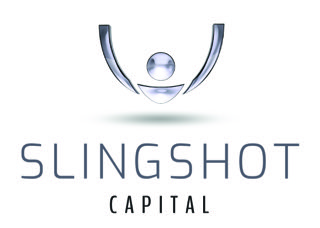The following article was contributed by Kris Altiere, US Head of Marketing for Moneypenny.
Law firms are busier than ever. With new systems, dashboards, and automation tools launched in the name of efficiency, you’d think productivity would be soaring. Yet for many, the opposite is true. Complexity creeps in, admin increases, and clients still end up waiting for answers.
At Moneypenny, we’ve learned that true progress doesn’t come from doing more, it comes from doing what matters. Our philosophy is simple: Get work done, don’t just perform, don’t just present. Instead deliver, clearly, quickly, and with care.
Whether it’s a client seeking reassurance, a paralegal managing a mounting caseload, or a partner steering firm strategy through change, the goal should always be the same: solve the problem and move forward.
Efficiency might be driven by data, but in law, trust and momentum are still powered by people.
The Trust Factor
Clients don’t just want results; they want to know their matter is in good hands. The best partnerships, whether between a legal firm and its clients or between colleagues, are built on accountability and trust.
Getting work done isn’t about checking boxes or sending updates for the sake of optics. It’s about ownership. Doing what you say you’ll do, every single time. Following through with integrity. In short: treat people how you’d like to be treated. That’s how client confidence is built and why trust remains a competitive differentiator for firms now and in the future.
Focus on What Only You Can Do
Law firms today face growing operational pressures: administrative backlogs, client onboarding delays, endless meetings. Many assume the answer is to do more in-house, hire more people but the most successful firms know when to outsource to a trusted partner.
That doesn’t mean losing control, however. It means surrounding your firm with trusted partners who amplify your capabilities and free your team to do what only they can do, advise clients and win cases. When done right, it creates focus.
At Moneypenny, we see this daily. We handle client calls, live chats, and digital communications for thousands of businesses in the legal industry. We take care of the admin that slows teams down so they can accelerate the work that matters most: serving clients and growing their firm. It’s partnership in its purest form: freeing their people to deliver their best.
Pragmatism Over Perfection
Grand digital transformation projects often sound impressive, but the real progress comes from consistent, pragmatic improvement. The best firms are selective about innovation. They adopt technology not for the headlines, but for the results.
These are the firms that deliver, time and again, because they know progress isn’t about chasing every new idea, it’s about using the right ones well.
They ask simple, powerful questions:
• What’s the work that needs to be done?
• Who’s best to do it?
• How can we do it well?
It’s a balanced approach, blending smart innovation with everyday pragmatism and one that turns productivity from a KPI into a true competitive advantage.
Tech That Enables, Not Overcomplicates
Technology has enormous potential to streamline legal operations but only when used intentionally. Too often, new systems add friction instead of removing it.
The smartest firms blend automation with human oversight, letting technology enable people rather than replace them. For example, at Moneypenny, our AI Receptionist handles routine client inquiries with speed and accuracy. But when a conversation requires empathy, nuance, or reassurance, one of our experienced receptionists steps in seamlessly.
The result is humans and AI together, each doing what they do best. Because in the end, emotional intelligence, the ability to listen, reassure, and build trust, remains a uniquely human strength, even as AI continues to evolve at a rapid rate.
Four Rules for Getting Work Done
This philosophy isn’t about going backwards or simplifying for the sake of it. It’s about cutting through the noise, building with intention, and putting resources where they’ll have the most impact.
It’s about following four simple objectives:
- Focus on what only you can do.
Concentrate on the work that truly requires your expertise. - Outsource with trust.
Partner with people who treat your clients as their own. - Use technology to enable, not to replace.
Automation is a tool — not a solution in itself. - Measure outcomes, not optics.
Progress is about results, not noise.
Clarity Over Complexity
Getting work done isn’t flashy but it is how great firms grow. One resolved issue, one clear decision, one satisfied client at a time.
Because when brilliant legal teams are supported by smart technology and the distractions fall away, exceptional things happen. Clients feel the difference, teams perform at their best, and the firm builds a reputation for service and sustained excellence.
For law firms navigating the fast-changing landscape, success will come from what matters most. Clarity over complexity. Trust over busyness. Action over appearance. And that is how law firms will truly move forward and stay ahead of the crowd.

 Investor Insights
Investor Insights Investor Insights: As a consequence of the above, when I review track records for fund managers one of the metrics I look at is how often the realized outcomes are dependent on a judicial decision (bench, trial or arbitral) as compared to an outcome determined through settlement. Overall, the data concerning litigation outcomes illustrates that a high percentage of cases (90%+) are settled prior to a judicial decision and so we need to view the results in the context of industry settlement rates. Generally speaking, and depending on the case type and jurisdiction, I have a strong preference for fund managers that have a disproportionate number of settlements in their realized portfolios as opposed to outcomes that were derived from a judicial decision, given the binary nature of those outcomes. In certain jurisdictions, litigation funders are able to have some influence on the settlement discussions which may tend to favour higher settlement rates, so this issue and my approach to it is not identical in every jurisdiction. Another influencing factor on settlement rates is case types and case sizes. Generally speaking, I have noticed that outcomes dependent on judicial/arbitral decisions are correlated with larger cases and certain case types (as an example, International Arbitration cases would be one area where settlement is less likely and hence arbitral outcomes more prevalent). Edward Truant is the founder of Slingshot Capital Inc., and an investor in the consumer and commercial litigation finance industry.
Investor Insights: As a consequence of the above, when I review track records for fund managers one of the metrics I look at is how often the realized outcomes are dependent on a judicial decision (bench, trial or arbitral) as compared to an outcome determined through settlement. Overall, the data concerning litigation outcomes illustrates that a high percentage of cases (90%+) are settled prior to a judicial decision and so we need to view the results in the context of industry settlement rates. Generally speaking, and depending on the case type and jurisdiction, I have a strong preference for fund managers that have a disproportionate number of settlements in their realized portfolios as opposed to outcomes that were derived from a judicial decision, given the binary nature of those outcomes. In certain jurisdictions, litigation funders are able to have some influence on the settlement discussions which may tend to favour higher settlement rates, so this issue and my approach to it is not identical in every jurisdiction. Another influencing factor on settlement rates is case types and case sizes. Generally speaking, I have noticed that outcomes dependent on judicial/arbitral decisions are correlated with larger cases and certain case types (as an example, International Arbitration cases would be one area where settlement is less likely and hence arbitral outcomes more prevalent). Edward Truant is the founder of Slingshot Capital Inc., and an investor in the consumer and commercial litigation finance industry. 





